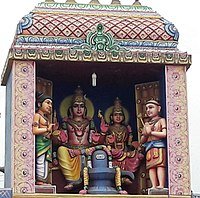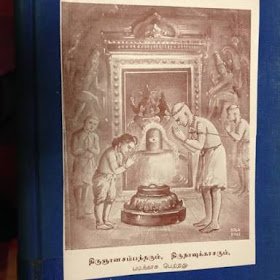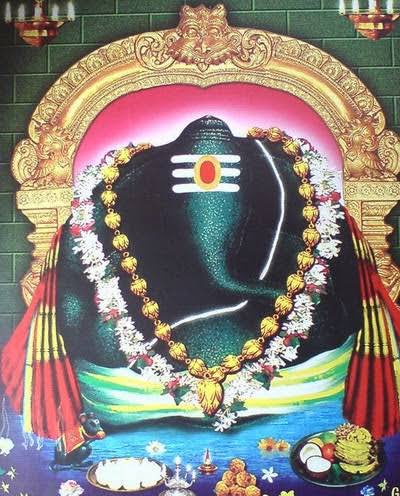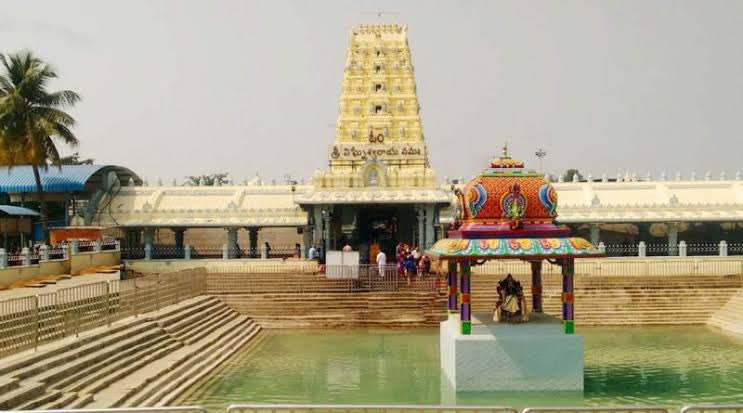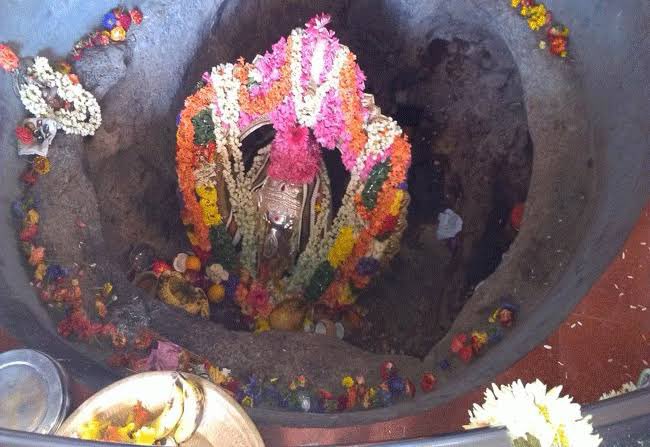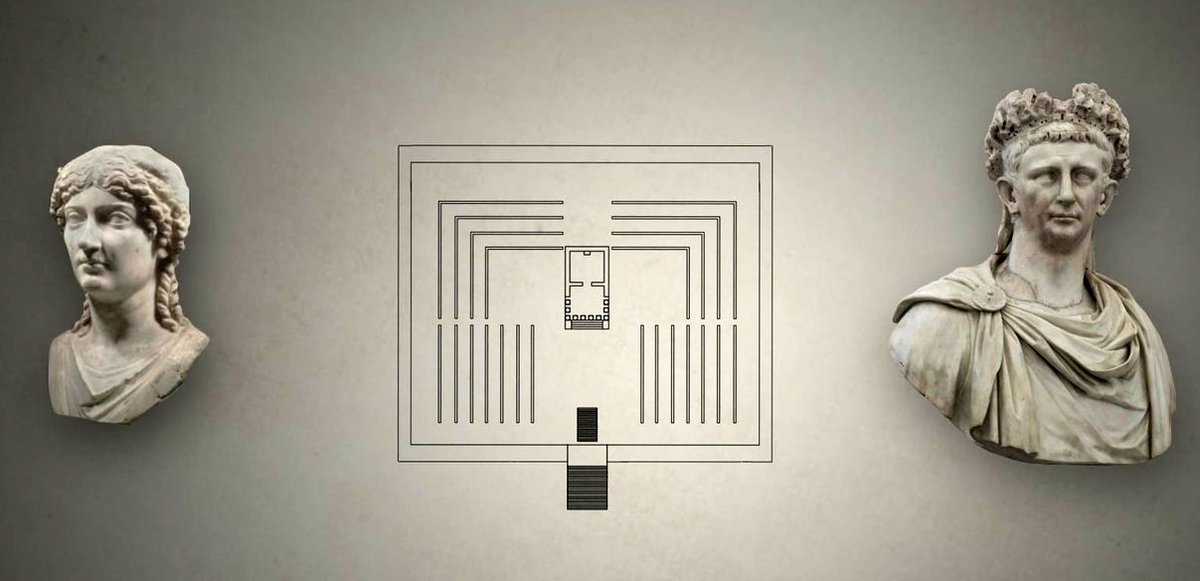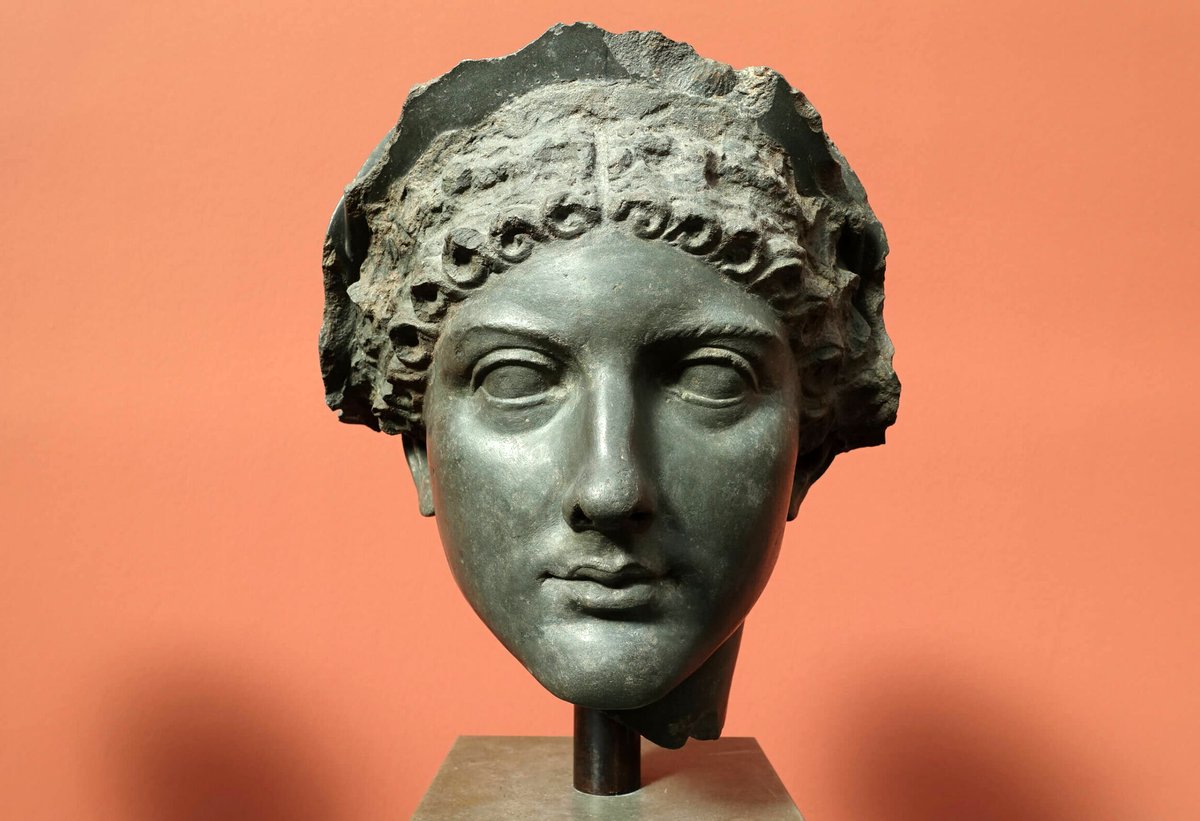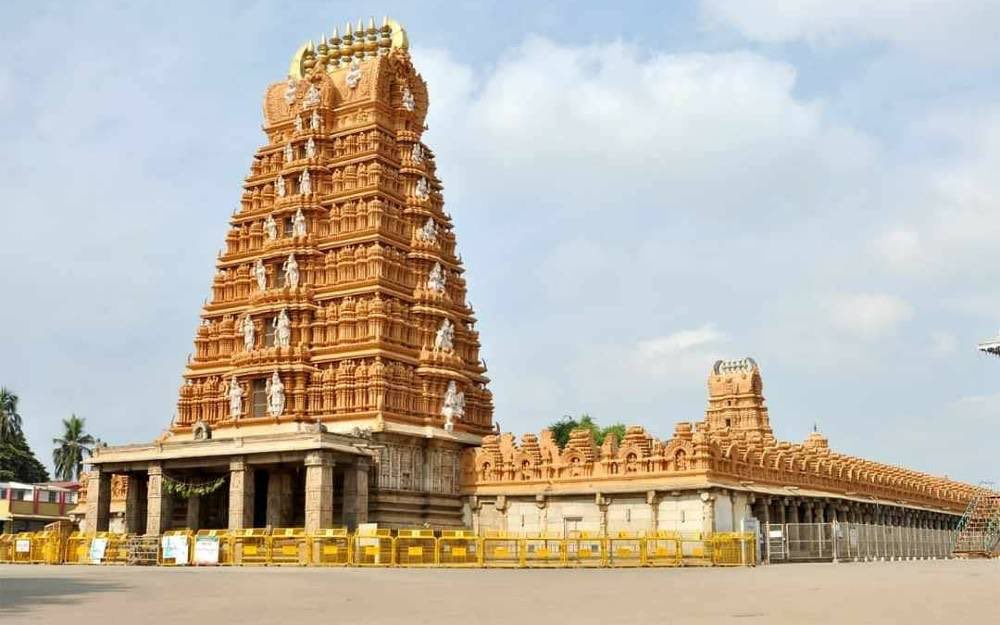A little late, but here goes:
Andhariki hrudayapurvaka Shubhakrit naama Yugaadi Shubhkankshalu
Ellarigu hritpurvaka Shubhakrit naama Yugaadi habbada Shubhashayagalu
Sarvaana Gudipaadavyaaccha khupa khupa Shubeccha
May Srinivasa bless everyone with Aayu: Aarogyam, and Aishwaryam
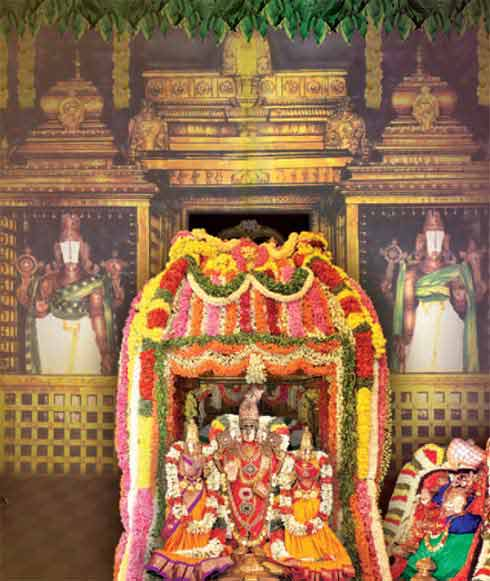
Time plays a very important role in shaping our lives. Everything is a function of time, which is why Time is a form of Paramatma. We have Siva worshipped as Mahaakaal in Ujjain, Ambal worshipped as Kaali; in fact, Kaali puja is an integral component of Deepavali celebrations in
— Master Chief Spartan (@SparesofWar) November 4, 2021
Kaala: pachathi bhutaani kaala: samharate prajaa: |
Kaala: suptheshu jaagarthi kaalo hi duratikrama: ||
Time eats all beings, time kills everyone. Time is awake when you are asleep. Time is insurmountable.
Experiences with Maha Periyava:
— \u0b85\u0ba9\u0bcd\u0baa\u0bc6\u0bb4\u0bbf\u0bb2\u0bcd (@anbezhil12) March 5, 2022
Once He was camping in the mines area in Vassangere in Karnataka which belonged to Sandur Maharaja. On that day He was sitting on a tarpaulin along with the other devotees. Annathurai Iyengar of Veda Raksha Nidhi Trust was also there with a few pic.twitter.com/rIKbNe93zN
It shouldn't, therefore, be surprising that the word "hour' itself

The distinction of measuring the time in a scientific manner is achieved only by Bh\u0101rat\u012byas. Time has been measured from the smallest dimension to infiniteness. Even Time is envisioned as God and venerated. Param\u0113\u015bvara was extolled as \u2018Mah\u0101k\u0101la\u2019, the very embodiment of Time. pic.twitter.com/e971wTM61Q
— Sri Samavedam Shanmukha Sarma (@SriSamavedam) December 18, 2020
Ugaadi, or Yugaadi/Kalpaadi if you will, actually marks the start of creation by Brahma. We have 60 years or vatsaras starting from Prabhava to Akshaya.
The Bharatakhanda or the Indian subcontinent is the only place to my knowledge where all 6 seasons are seen.
The word Vasantha in Samskrutam has its own significance.
Shaanta mahaanto nivasanthi santho
Vasathavallokahitam charanta: |
Theernaa: swayam bhimabhaavaarnavam janaa
nahetunaanyaanapi thaarayanta: ||
Here, Acharya Bhagavadpaada compares great realized saints, who are only focused on doing
Maasaanaam maargashirshoham rithunaam kusumaakara:
Of all the months, I am Margashira, and of all seasons I am Spring. That does not mean the others are His opulence. It only suggests that He can be easily discovered in those where
Vishnu Sahasranamam draws a parallel and says Aha samvatsaro vyala: pratyaya: sarvadarshana:
April 2, 2022, marks the advent of the 36th year of these 60 named Shubhakrit. Shubhakrit primarily stands for
Sarvakaamasamrudischa Shubhakrun naama vatsare ||
Bountiful crops, health, wealth, all around fruitful results, fulfilment of all tasks are characteristics of this year.
The Ugadi Pacchadi that is traditionally made during the day is also a reflection of this all-encompassing year.
Wishing you all a very happy Ugadi and ensuing Tamil Putthandu/Vishu as well. Mangalam bhavatu ✋🏻
More from Master Chief Spartan
I need your opinion on something else as well...
— Kishore C Iyer\U0001f1ee\U0001f1f3 (@Kishoreciyer1) March 28, 2021
There is story of Camel being the vahanam of Hanuman... how true is it? Seems very prevalent in Telegu literature!
several things are ascribed to that form - a recognition of its power, Sakti, which is a feminine quality and hence worshiped as a consort, parivaara devataas (ones who always serve that form and show others how it's done), and a vaahana. Here, Vaahana does not only mean
a vehicle. Vaahana is actually a conduit. It tells you what kind of devotion is required in order to be always in service of that diety and to be chosen by that form. Vaahana is also an insignia or a Dwajam that espouses the gunas of that diety.
Now, coming to the question. Hanuman is usually worshiped as Raamadaasa, Raamadhuta, etc. However, there are Hanumadh upaasakas who specifically worship Hanuman as Brahman complete with Avataras. There are many mantra sastras that support this. In fact, they say Ha nu ma
are subtle syllables within the A U Ma Omkara itself, which means one needs to probe deep in order to understand the actual Hanumad tatvam. Hanuman is really a Brahmachari no doubt but, like I said above, upasana vidhis require that He be worshiped with a consort and vaahana
**Long thread alert**
Rig Veda the oldest only mentions Shiva twice. Common sense? Zoroastrianism.
— \u0bb2\u0bbe\u0bb5\u0ba3\u0bcd\u0baf\u0bbe/Lavanya (@dwomanislavanya) August 31, 2021
Mantras are only found in Vedas, not in the common tongue. Anyways, her perspectives matter zilch. What is more alarming is how a proper Thirumurai vakyam such as Anbe Sivam is being twisted and appropriated for nefarious agendas and how SM is brazenly peddling the same nonsense.
Yasya nishvasitam Vedaa: yo vedebhyo akhilam jagat | Nirmame tam aham vande vidyaatirtha Maheshvaram ||
One Whose very breath is the Veda using which the entire Creation was made, I bow down to Maheswara Who purifies with His wisdom.
So, if Vedas are really His own breath, how
can one draw stupid faux ethnic identities denying His indication in the Vedas? This has no rationale even to the self-proclaimed rationalists.
Let's attempt to understand what the naama Shiva means. I believe this foundation is important before we go on to understand any Naama vaibhavam. Do note that in SD, the Naama and the Naami are indifferent. In fact, Bhaktas consider the Naama to be greater since




